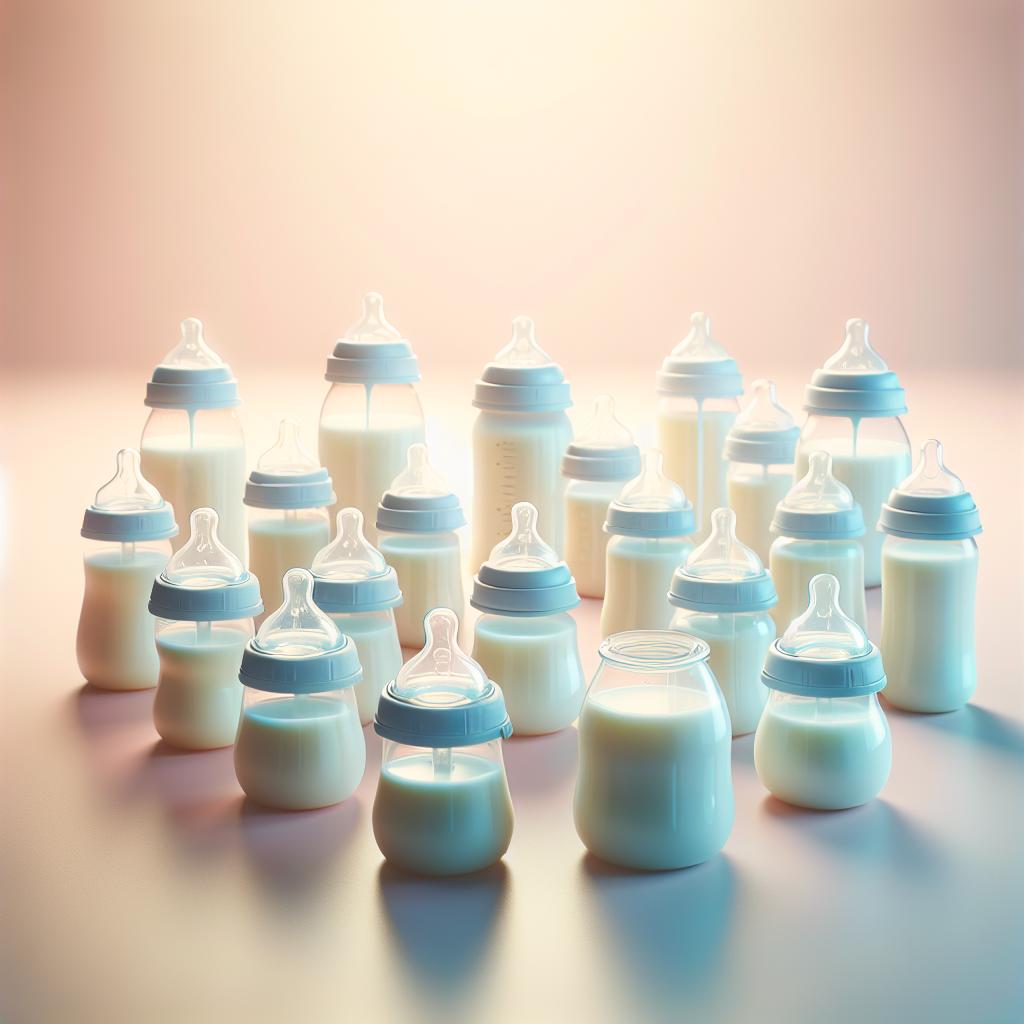Biomimetic Feeding: Embracing Nature’s Design in Baby Bottles
In the world of neonatal nutrition, a revolutionary approach is gaining momentum – biomimetic feeding. This strategy seeks to emulate nature’s design, offering a more intuitive and beneficial feeding experience for infants. As we delve into the world of biomimetic feeding, we’ll explore the concept, its benefits, and how it’s shaping the future of baby bottles.
Understanding the Concept of Biomimetic Feeding
The word ‘biomimetic’ is derived from ‘bio’ (life) and ‘mimesis’ (imitation). In the context of baby feeding, a biomimetic approach means replicating the natural method of breastfeeding as closely as possible. In fact, the primary philosophy behind biomimetic feeding is that nature, in its wisdom, provides the best design for newborns to feed.
Biomimetic feeding incorporates an understanding of the baby’s natural feeding behavior, the physiological benefits of breastfeeding, and the mother-infant bond that forms during feeding. It brings all these aspects into the design of baby bottles to ensure a more natural bottle feeding experience.
The Benefits of Biomimetic Feeding
- Promotes Natural Oral Development: Biomimetic feeding encourages the same oral movements as breastfeeding, aiding in proper jaw and oral structure development.
- Enhances Digestive Health: The slow, rhythmic pace of biomimetic feeding minimizes air intake, decreasing the likelihood of colic and digestive discomfort.
- Fosters Emotional Connection: Biomimetic feeding enables babies to control the flow and pauses, enhancing their sense of security and bonding with the caregiver.
- Eases Transition between Breastfeeding and Bottle Feeding: The natural design and method of biomimetic feeding makes it an effective strategy for babies who switch between breastfeeding and bottle feeding.
Biomimetic Feeding and the Evolution of Baby Bottles
Biomimetic feeding is setting new standards in the design and functionality of baby bottles. Companies, such as Emulait, are creating products that consider both the physiological and emotional needs of the baby and the convenience of the caregiver. A state-of-the-art biomimetic baby bottle closely mimics the natural shape, feel, and function of a mother’s breast, as discussed in our article on upcoming trends in baby bottles.
Scientific research supports the notion that biomimetic feeding can lead to better infant health outcomes. A recent study published in the National Library of Medicine highlights the benefits of a feeding style that encourages babies to control the flow, pace, and volume of their feeding, just as they would naturally during breastfeeding.
Concepts from biomimetics are also influencing other aspects of infant care. For example, the way we use play dough to enhance our baby’s motor skills, as highlighted in this article.
As we move forward, we can anticipate biomimetic principles to continue inspiring innovative practices and products in neonatal nutrition and overall infant care. Taking cues from nature, biomimetic feeding fosters a healthy, comfortable and nourishing experience for both the baby and the caregiver.
The Mechanism Behind Biomimetic Feeding
Unlike conventional feeding bottles that simply provide a means of delivering milk, a biomimetic baby bottle emulates biological breastfeeding. It involves a system that attempts to simulate the vital components of breastfeeding: sucking, swallowing, and breathing. Combining these aspects, a biomimetic bottle replicates the physiological functions of natural feeding and complements the infant’s natural rhythm.
Challenging Conventional Feeding Models: The Innovations in Biomimetic Baby Bottles
Biomimetic feeding bottles are a departure from the traditional feeding products. Moving away from rigid mouths and hard surfaces, biomimetic bottles feature a soft breast-like nipple, closely duplicating the mother’s breast. These nipples are pliable, resistant to collapsing, and mimic the natural compression of a maternal nipple during breastfeeding.
Moreover, the flow rate of a biomimetic bottle aligns with a baby’s feeding speed rather than being fixed, reducing the chances of overeating or choking. The design and structure of a biomimetic bottle adapt in response to the infant’s feeding habits and preferences, echoing the principles of a biological interaction.
One such bottle demonstrating these features is the Emulait Classic Baby Bottle. The bottle closely resembles the maternal breast in both shape and feel, thus offering a realistic and natural feeding experience.
The Scientific Backing of Biomimetic Feeding
Both anecdotal and scientific evidences support the benefits of biomimetic feeding methods. Several research studies have demonstrated the importance of a feeding environment that allows the infant control over the feed’s timing, volume, and duration. This approach, research shows, can promote optimal weight gain, support improved physical development, and foster emotional well-being. A similar impact has been reported in a 2022 study published in the Journal of Insects, wherein biomimicry has been used to understand human milk properties.
Research indicates that a biomimetic approach can also help manage common feeding-related issues, such as reflux and colic, by allowing a more natural rhythm. Biomimetic feeding has been suggested as an effective method to support babies who have problems feeding, thereby making it a great solution for many modern families.
The Future of Biomimetic Feeding and Baby Bottles
The principles of biomimicry and its application in neonatal feeding are gradually being recognised and appreciated. We can expect these principles to continue guiding product development in the baby feeding sector, leading to more intuitive and baby-friendly products.
As the benefits of biomimetic feeding become more widely known, the trend is likely to gain more prevalence. It is also likely to influence caregiver attitudes towards feeding infants, encouraging caregivers to pay more attention to individual infant cues and rhythms rather than schedules or deadlines.
As biomimetic feeding continues to evolve, we can anticipate a remarkable improvement in neonatal nutrition and overall infant care, honouring nature’s design for the benefit of the world’s smallest individuals.






